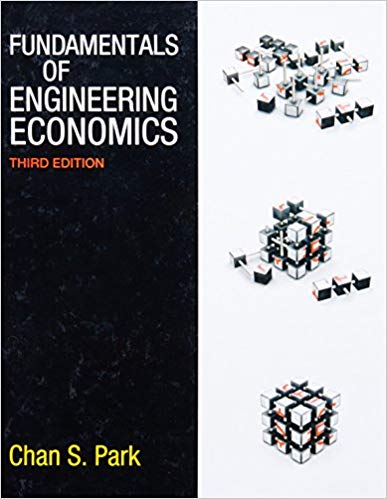HRobot Incorporated (HRI), a world leader in the robotics industry, produces a line of industrial robots and
Question:
H‐Robot Incorporated (HRI), a world leader in the robotics industry, produces a line of industrial robots and peripheral equipment, which perform many routine assembly‐line tasks. The company enjoyed much success in the past when automobile manufacturers and other durable goods producers sought to cut costs by automating the production process. However, increased competition, particularly from Japanese firms, had caused HRI’s management to be concerned about the company’s growth potential. Therefore, HRI’s research and development department has been applying industrial‐robot technology to develop a line of household robots. The household robot is designed to function as a maid, mainly performing such tasks as vacuuming floors and carpets. This R&D effort has now reached the stage where a decision must be made on whether to go forward with production.
HRI’s marketing department has plans to target sales of the robots to households with working mothers in the United States, and if it is successful there, then the robots could be marketed even to college students or households in other countries. Additional data follow.
- The marketing vice president believes that annual sales would be somewhere between 150,000 and 300,000 units (most likely, 200,000 units) if the robots were priced at $400 each.
- The engineering department has estimated that the firm would need a new manufacturing plant; this plant could be built and made ready for production in two years once the “go” decision is made. The plant would require a 35‐acre site, and HRI currently has an option to purchase a suitable tract of land for $2.5 million. Building construction would begin in early 2013 and continue through 2014. The building, which would fall into the MACRS 39‐year class, would cost an estimated $10.5 million. A $3.5‐million payment would be due to the contractor on December 31, 2012, and another $7 million payable on December 31, 2014.
- The necessary manufacturing equipment would be installed late in 2014 and would be paid for on December 31, 2014. The equipment, which would fall into the MACRS seven‐year class, would have a cost of $18.5 million, including transportation, plus another $500,000 for installation. To date, the company has spent $12 million on research and development associated with the household robot. The company has expenses of $4 million for the R&D costs; the remaining $8 million already has been capitalized and will be amortized over the life of the project. However, if HRI decides not to go forward with the project, the capitalized R&D expenditures could be written off on December 31, 2012.
- The project would also require an initial investment in net working capital equal to 12% of the estimated sales in the first year. The initial working capital investment would be made on December 31, 2014. On December 31 of each following year, net working capital would be increased by an amount equal to 12% of any sales increase expected during the coming year.
- The project’s estimated economic life is eight years (not counting the construction period). At the end of that time, the land is expected to have a market value of $4.5 million, the building a value of $3 million, and the equipment a value of $3.5 million. Problems 459
- The production department has estimated that variable manufacturing costs would total 65% of dollar sales, and that fixed overhead costs, excluding depreciation, would be $8.5 million for the first year of operations. Sales prices and fixed overhead costs, other than depreciation and amortization, are projected to increase with inflation, which is estimated to average 5% per year over the eight‐year life of the project. (Note that the first year’s sales would be $400 * 200,000 units = $80 million. The second year’s sales
would be 5% higher than $80 million, and so forth.) - HRI’s marginal combined tax rate is 38%; its weighted average cost of capital is 15% (meaning that its minimum attractive rate of return is 15%); and the company’s policy, for capital budgeting purposes, is to assume that cash flows occur at the end of each year.
- Since the plant would begin operations on January 1, 2015, the first operating cash flows would thus occur on December 31, 2015. Assume that the current decision point is December 31, 2012.
(a) Develop the project cash flows, after taxes, over the life of the project. Use Excel to prepare the project cash flow worksheet.
(b) Determine the equivalent net worth of the project at the time of commercialization.
(c) Determine the equivalent annual worth of the project and the unit profit per production.
(d) Determine the internal rate of return of the project.
(e) Determine the break-even annual unit sales to justify the investment.
(f) Suppose that the unit sale price could decline 3% annually over the previous year’s price due to market competition. (But all other costs, other than depreciation and amortization, would increase at an annual rate of 5%.) What is your course of action?
Internal Rate of Return of IRR is a capital budgeting tool that is used to assess the viability of an investment opportunity. IRR is the true rate of return that a project is capable of generating. It is a metric that tells you about the investment... Capital Budgeting
Capital budgeting is a practice or method of analyzing investment decisions in capital expenditure, which is incurred at a point of time but benefits are yielded in future usually after one year or more, and incurred to obtain or improve the... Cost Of Capital
Cost of capital refers to the opportunity cost of making a specific investment . Cost of capital (COC) is the rate of return that a firm must earn on its project investments to maintain its market value and attract funds. COC is the required rate of...
Step by Step Answer:






